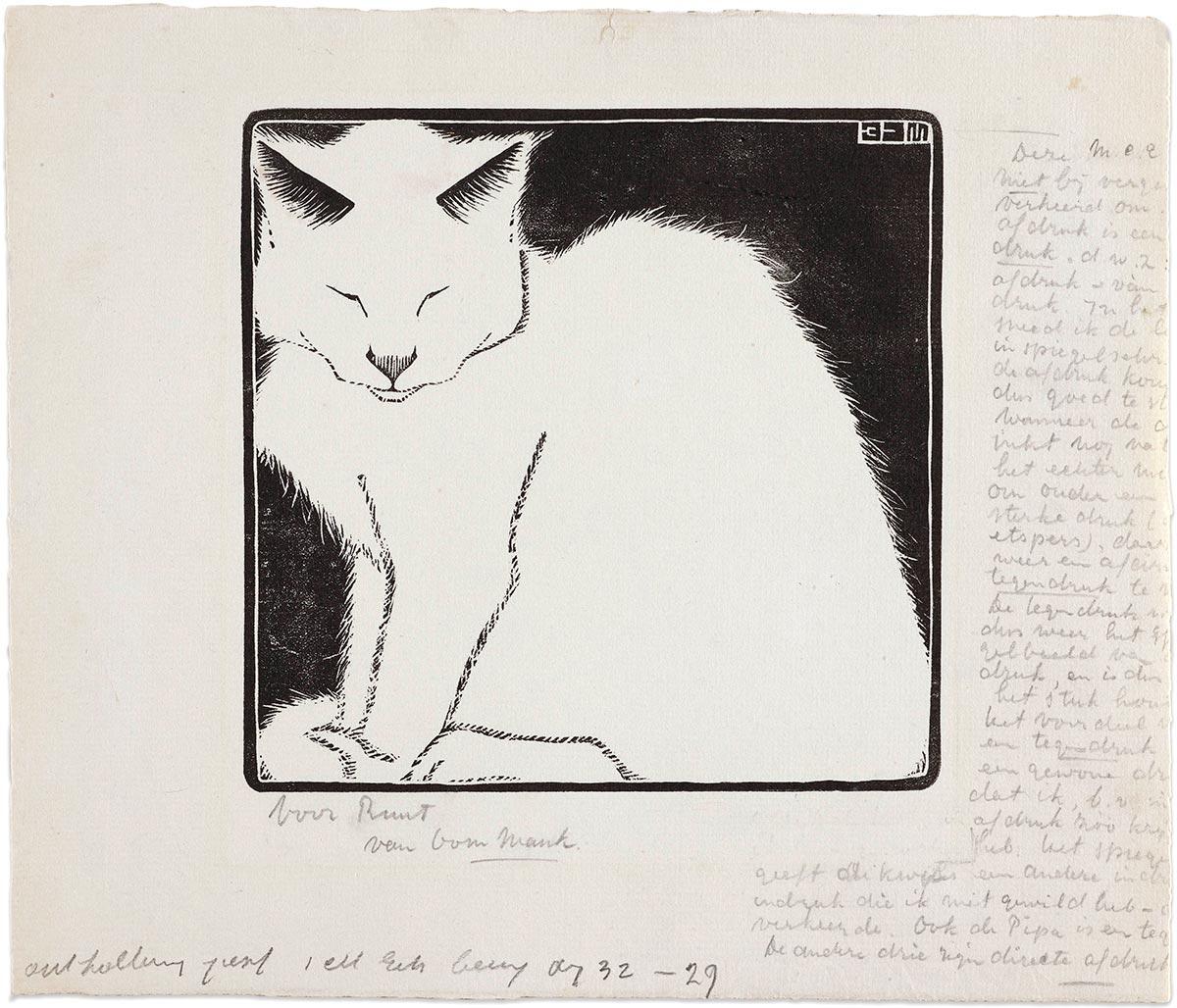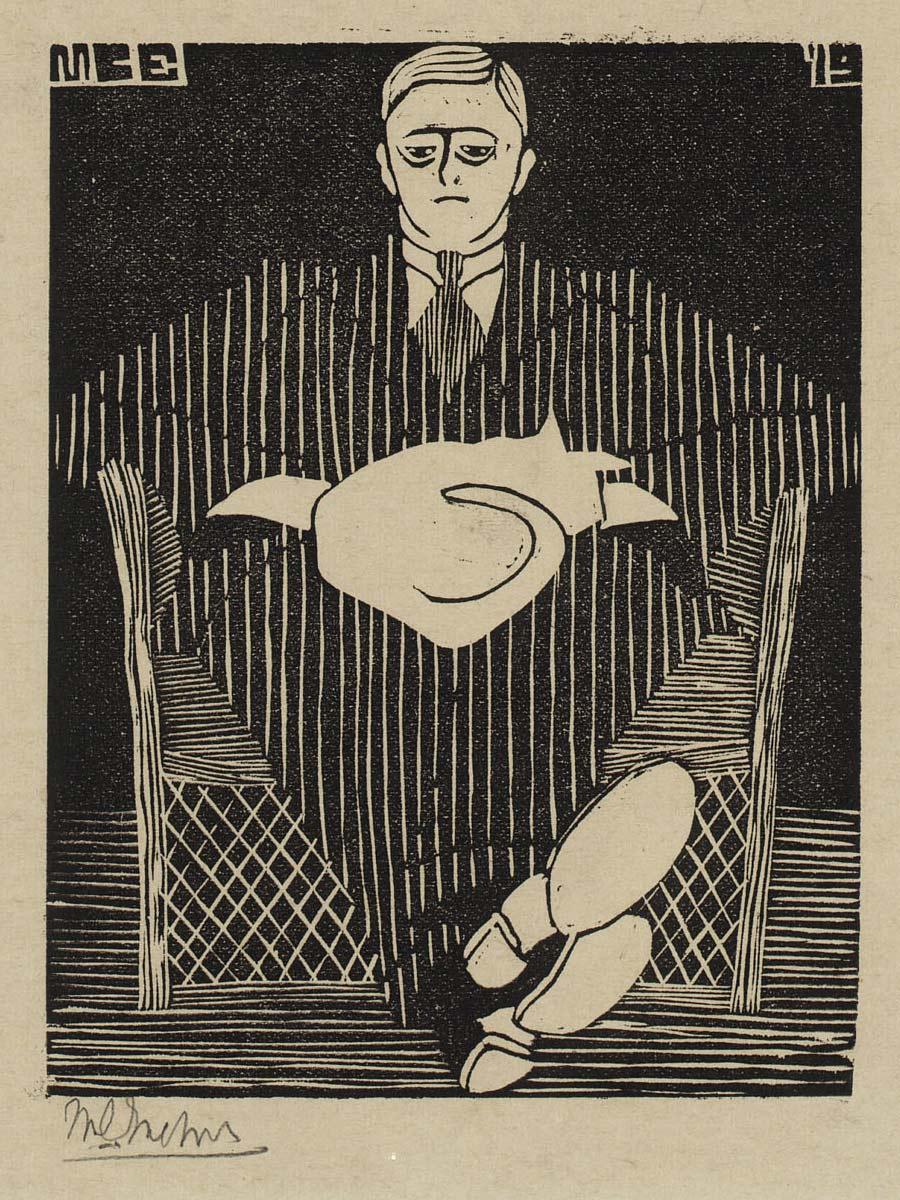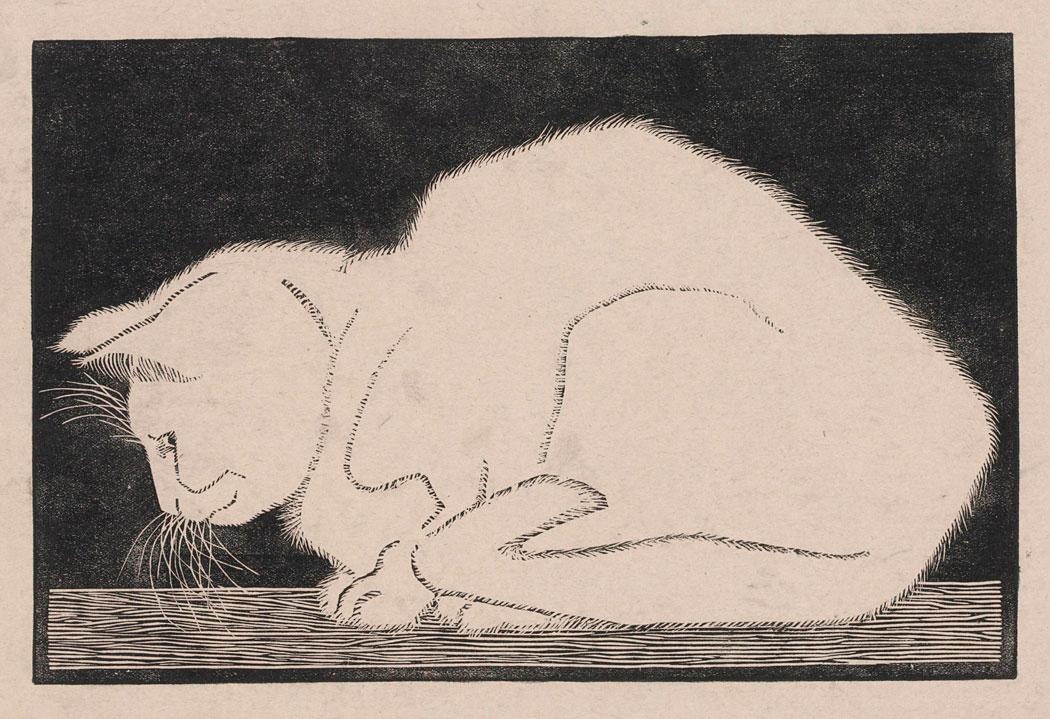
Escher in The Palace has acquired a unique work by Maurits Cornelis Escher. When the woodcut of a white cat was being removed from its frame, a previously unknown text by M.C. Escher himself was discovered. The text has been examined and interpreted over the past few months.

The woodcut of the white cat had been on the museum’s wishlist for some time. The fact that this print is a counterproof makes this acquisition even more exceptional, and a fantastic addition to the collection. Escher in The Palace houses and shows the largest museum collection of the artist’s work anywhere in the world.
A beloved pet
Escher made this work when he had just moved to Haarlem in 1919, to study at the School of Architecture and Decorative Arts. His landlady gave him a white cat as a pet. The animal became a favourite subject for Escher. He filled a sketchbook with drawings of the cat, and depicted it in three woodcuts. Twice, the cat featured as the main subject, while in the third she lies on the sitter’s lap. All three prints are on display at Escher in The Palace from 25 June to 15 September.
In White Cat the animal is depicted face on, with its eyes closed, in an image that clearly reflects Escher’s affinity for his pet. Examining the print from close by, it is possible to see how painstakingly he cut the fine hairs of the cat’s fur into the wooden block.
The fact that this version of White Cat is a counterproof is apparent from the monogram, which appears in mirror-image. At the start of his career, especially, Escher often experimented with counterproofs, which allowed him to make an impression of the image as he saw it.


Discovery of unknown text by Escher
When the new acquisition arrived at the museum, an important find was made as the mount was being removed. A text about the print, handwritten by M.C. Escher, was revealed. Escher described in detail why he made this particular counterproof. Unfortunately, parts of the text had been cut away or erased. This probably happened decades ago when the work was framed, as the text must have been regarded as less important than the image. But Escher experts refused to admit defeat, and set to work like true detectives. After thorough research, they managed to fill in parts of the missing text, to make it readable again. Unfortunately, however, one sentence had been erased so completely that it can no longer be reconstructed, so we can only guess what it might have said.
Dedicated to nephew
The print is dedicated to M.C. Escher’s nephew Rudolf Escher, who became a well-known composer. Escher wrote the dedication below the image. He would often give prints to friends and family. Since Rudolf was still a child when the print was made, Escher probably regarded it as an ideal gift for his beloved nephew.

Cat art competition
To welcome the acquisition to the museum, Escher in The Palace is organising a cat art competition for children and adults. Everyone is invited to email a picture of their drawing, print, collage or painting of their favourite cat to the museum by 21 July. The entries will be examined and assessed by a professional jury, consisting of Jet Boeke, who draws the famous orange tomcat Dikkie Dik, Angelo Rens of The Hague animal hospital and ambulance service, and Judith Kadee, curator at Escher in The Palace.
Read more about the cat art competition